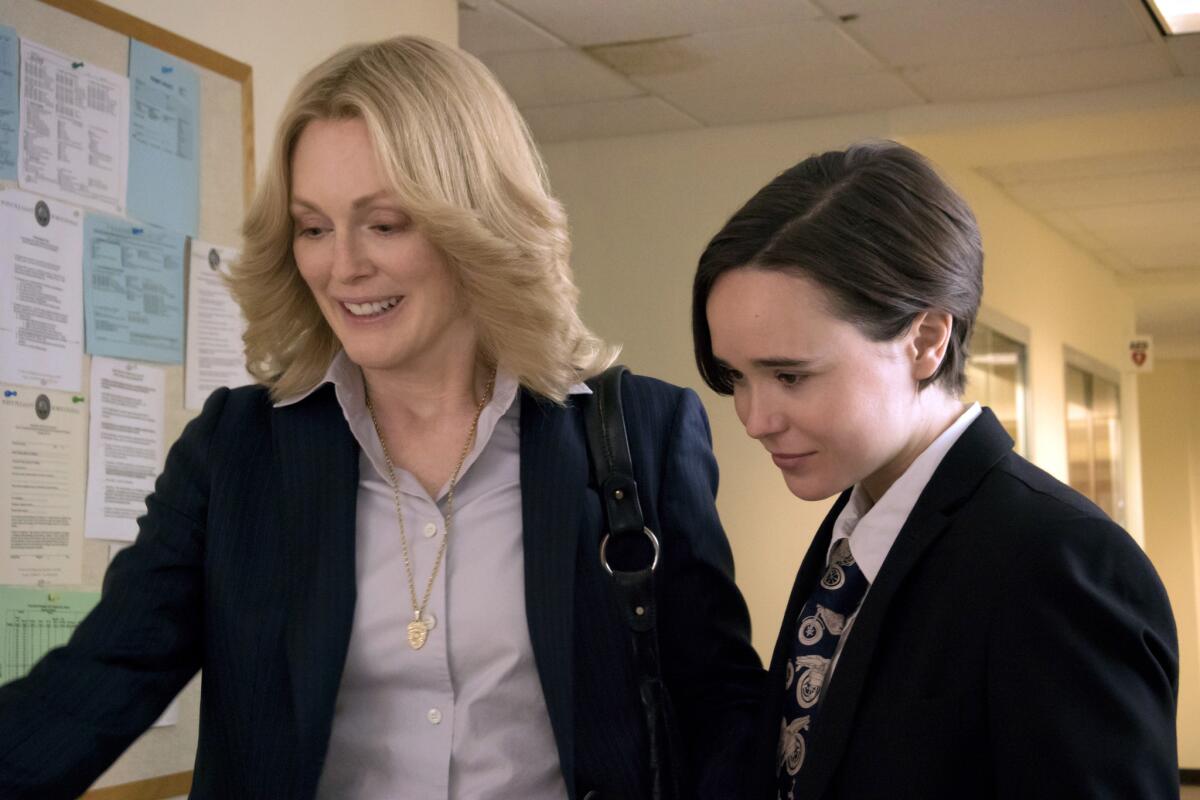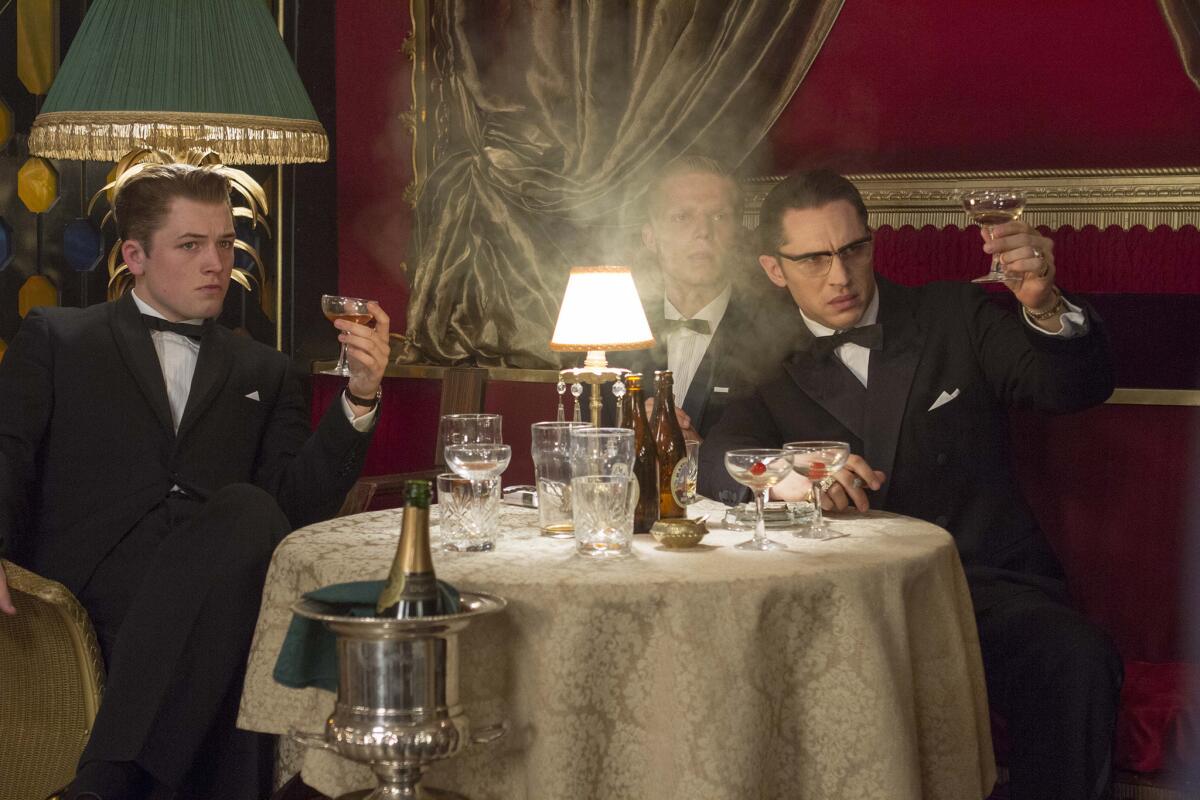Here is why Hollywood also has an LGBT diversity issue
It is no secret that Hollywood has a diversity issue -- just take a look at the past two years of #OscarsSoWhite. But more than some may have expected, the industry’s exclusion problems extend past the conventional conversation about race/ethnicity and sex. According to the latest study from GLAAD, released Monday, LGBT representation in film needs improvement as well.
"Hollywood's films lag far behind any other form of media when it comes to portrayals of LGBT characters," said Sarah Kate Ellis, GLAAD’s president and CEO, in a statement. "Too often, the few LGBT characters that make it to the big screen are the target of a punchline or token characters. The film industry must embrace new and inclusive stories if it wants to remain competitive and relevant."
GLAAD is the leading lesbian, gay, bisexual and transgender media advocacy organization. Their fourth annual Studio Responsibility Index maps the quantity, quality and diversity of LGBT people in films released by the seven largest motion picture studios: 20th Century Fox, Warner Bros., Lionsgate Entertainment, Walt Disney Studios, Sony Columbia Pictures, Universal Pictures and Paramount Pictures. Below are eight highlights from the study:
Only 22 of the 126 major releases in 2015 included characters identified as LGBT.

That’s only 17.5%, and not a change from 2014’s 17.5% value. Some of these films include Lionsgate’s “American Ultra” and “Freeheld” and Warner Bros.’ “Magic Mike XXL” and “Get Hard.” In those 22 films, there were 47 LGBT characters, up from 28 last year.
When movies do have LGBT characters, they are usually gay men.

Male characters outnumbered females by a ratio of more than three to one. More than three quarters of inclusive films (77%) featured gay male characters while less than a quarter (23%) included lesbian characters. As for the representation of the rest of the queer community, only 9% included bisexual characters while only one film was trans-inclusive, Warner Brothers’ “Hot Pursuit.”
But they’re also usually white.
In 2014, 32.1% of LGBT characters were people of color. That number dropped to 25.5% in 2015. Of the LGBT characters counted in 2015, 34 (72.3%) were white, five were Latino (10.6%), four were black (8.5%) and three (6.4%) were Asian or Pacific Islander. One character was non-human, Fabian in Lionsgate’s “Un Gallo con Muchos Huevos.”
When there are LGBT characters, you might miss them if you blink.
Just looking at the number of LGBT characters on the big screen isn’t enough. With 73% of the few queer characters having less than 10 minutes of screen time, their impact is additionally limited.
Of the seven studios, not even one is doing “good.”
Since the study's inception, GLAAD has given each studio a rating of good, adequate or failing. None of them received a rating of “good” for their 2015 releases. Fox, Lionsgate, Sony and Universal all received ratings of "Adequate", while Paramount, Disney and Warner Bros. all received a "Failing" grade.
The most inclusive major studio was Lionsgate, as eight of its 2015 releases were LGBT-inclusive.
Warner Bros. followed with five then Universal with four. Sony only had three and Fox two. Neither Disney nor Paramount included any LGBT content in their 2015 slates of 11 and 12 films, respectively.
That’s probably because LGBT depictions are getting worse.
Last year saw a resurgence of outright offensive images of LGBT people; more films relied on gay panic and defamatory stereotypes for giggles. Though humor can be a powerful tool to challenge the norm, when crafted problematically, it has the opposite effect.
The depictions are so bad that only eight of the 22 LGBT-inclusive films passed the “Vito Russo Test.”
The "Vito Russo Test" is GLAAD’s set of criteria analyzing how LGBT characters are represented in fictional work named after GLAAD co-founder and film historian Vito Russo. Inspired by the “Bechdel Test," these criteria represent a standard GLAAD would like to see a greater number of mainstream Hollywood films reach in the future.
In order to pass the Vito Russo Test, a film must include having an identifiably lesbian, gay, bisexual or transgender character that is not solely or predominantly defined by their sexual orientation or gender identity and is tied into the plot in such a way that their removal would have a significant effect. Only eight of the 22 major studio films that featured an LGBT character passed the test in 2015, the lowest percentage in this study's history.
Luckily, the major studios have more progressive imprints.
Last year, GLAAD began examining the film releases of four smaller, affiliated studios to draw a comparison between content released by the mainstream studios and their perceived “art house” divisions. Those smaller studios are Focus Features, Fox Searchlight, Roadside Attractions and Sony Pictures Classics.
Of the 46 films released under those studio imprints, 10, or 22%, were LGBT-inclusive. That’s a notably higher percentage than the parent studio counterparts and an increase from 2014’s 10.6% (five of 47) of films from the same divisions. Some of the films from these smaller studios include “The Danish Girl,” “Grandma” and “Stonewall.”
Check out the full study on GLAAD’s website.
MORE:
This documentarian is fighting back against gay culture's 'No Fats, No Femmes' mantra
When Prince bended gender, he gave black men permission to be free
Get your life! Follow me on Twitter: @TrevellAnderson.
Only good movies
Get the Indie Focus newsletter, Mark Olsen's weekly guide to the world of cinema.
You may occasionally receive promotional content from the Los Angeles Times.







